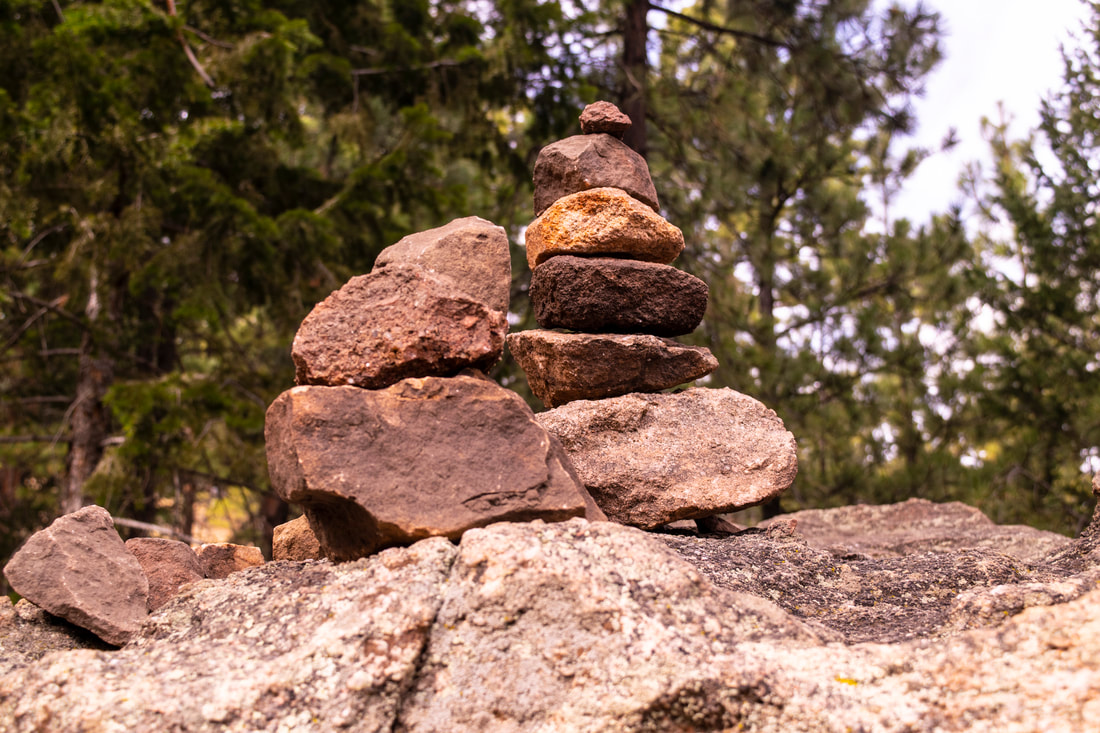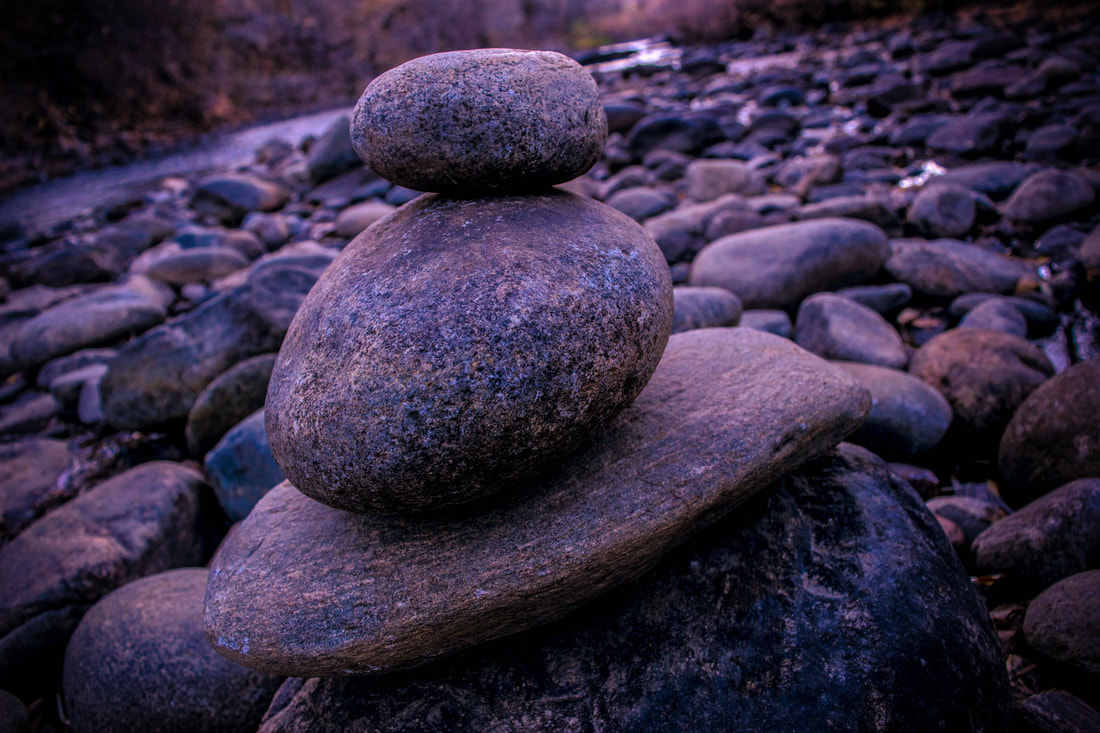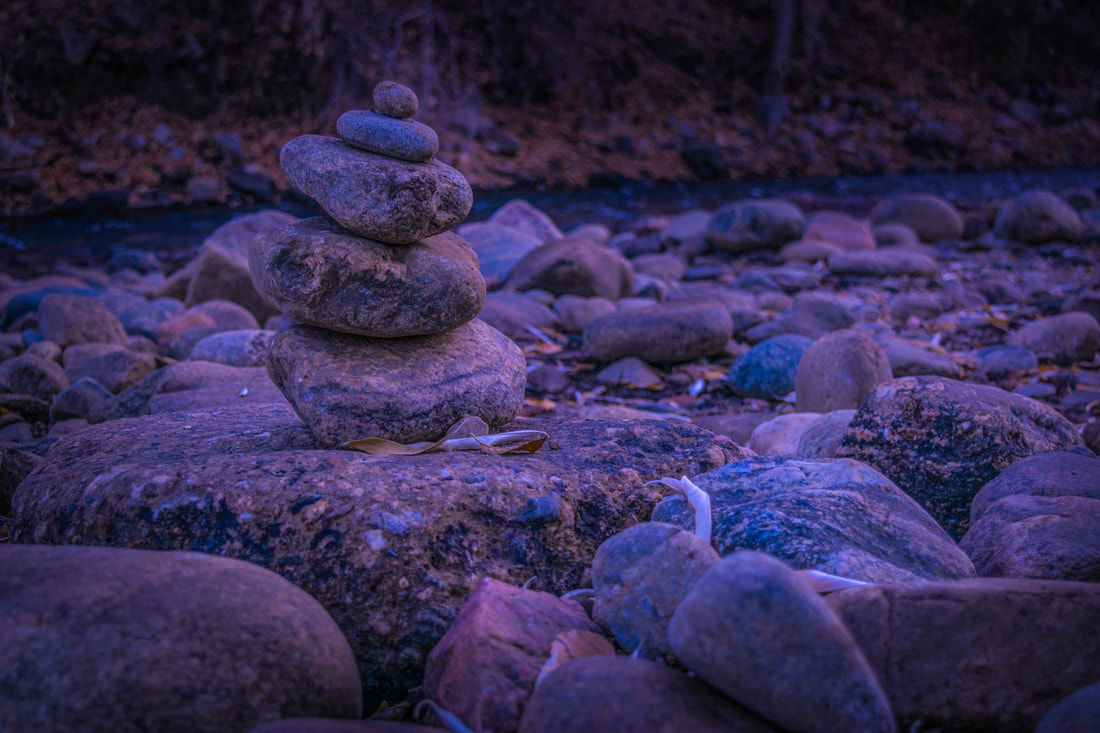|
Have you ever been on a hike or a walk with nature and noticed these stacked stones just simply wondered, "Why?" Same. So, I decided to look into it. Historical InfluenceA stack of stones with a purpose is called a cairn. That purpose could be a memorial, a trail marker, or to signify a landmark. Cairns have been built since as far back as the Bronze Age (3300 BC - 1200 BC). They ranged from tiny sculptures to large towers. There are a lot of differing traditions founded in various countries, but basically the building of cairns boils down to two things: 1. Memorial - Honor the dead 2. Land marker - Helped people stay on roads, helped seafarers know where they were based on what cairns they saw on the coast. This cairn could be telling hikers in the Rocky Mountains which way to go on the trail: Spiritual InfluenceStacking the rocks is a meditative practice as it takes concentration and balance. It takes patience and thought to assemble. There's a religious aspect to this too. The creation of something temporary out of the tools of the earth resembles the human creation in several religions and faiths. It's also an acknowledgement of our temporary time here on Earth, much like how the cairn will fall over with time. Some people also believe that there are places on Earth where the energies are all in balance and build the cairns to mark these spots. This cairn could be showing you the easiest part of Clear Creek in Colorado to cross: Should We Continue Making Cairns?Short answer: No.
Many modern trails have professionally built cairns marking the way, or other methods of letting you know you are still on the path. The smaller cairns that we see being built by people today (at least in the United States) are either being built as a memorial for someone they love or for spiritual purposes. While both of those reasons are valid, building these small cairns can have a negative effect on the environment itself: 1. Can cause disruption to the local ecosystem. Many bugs and small creatures (think crabs, small mammals, reptiles, etc) use rocks to hide from predators, or as their home. 2. False use of cairns can lead to lost hikers and/or drownings. 3. Can cause soil erosion, which in turn destroys microhabitats. This cairn could be showing you the easiest part of Clear Creek in Colorado to cross:
0 Comments
|
All
|



